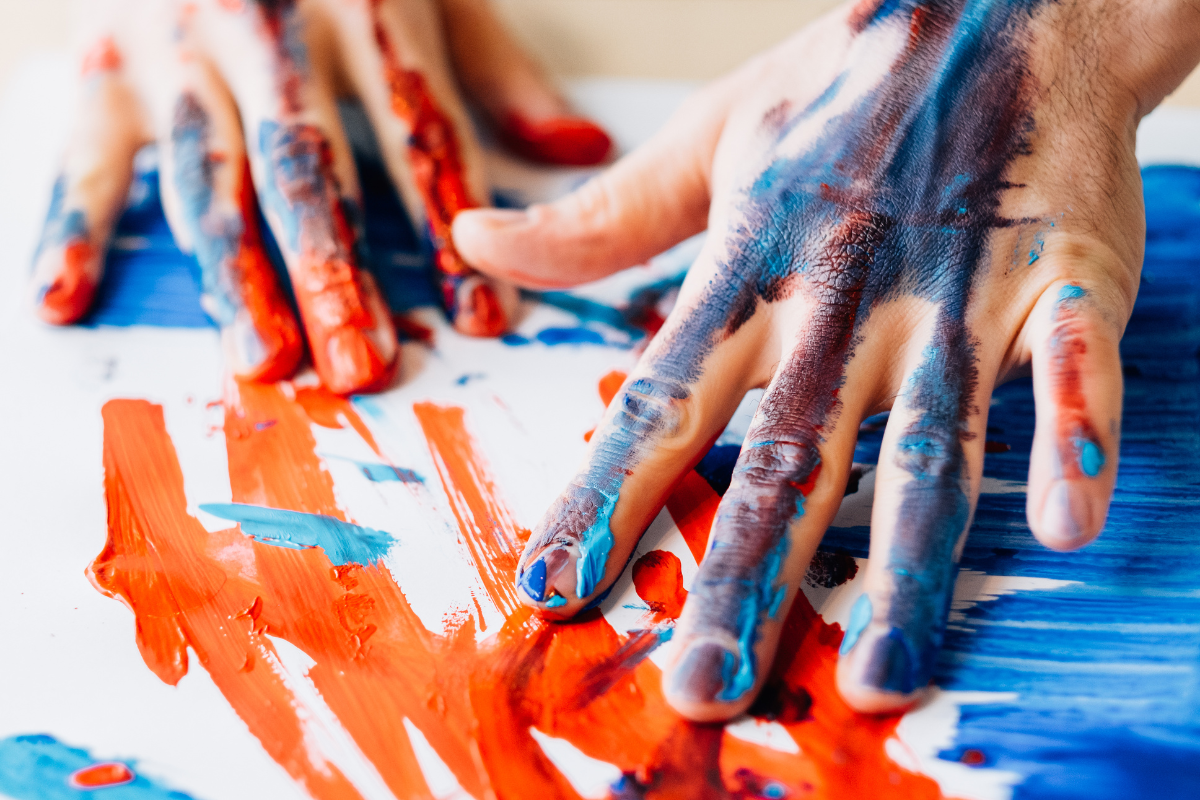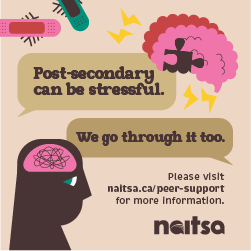Students often lead chaotic lifestyles. Managing classes, jobs, studying, relationships and self-care often leaves little time for spiritual respite. Especially during stressful life changes, even students who don’t consider themselves spiritual might feel an urge to search for a purpose beyond the daily routine.
NAIT is home to many students of diverse cultures, backgrounds and religions. There are chaplains on campus that can provide students with services to align with their different faiths. Regardless of denomination, spirituality can be a useful source for finding peace and reflection. Dana Rayment, a volunteer chaplain at NAIT, believes that visual art can help students connect to their spiritual side.
“People want to experience spirituality but [might not] want to say what denomination or flavour they’re from. Without it being a generic spirituality, it allows people to tap in. Maybe I would call it more mystical spirituality, so they’re not tapping into a specific belief system or theology,” said Rayment.
Instead, she said, physical art can help students tap into a type of spirituality they can feel and express through their body. Students who grew up with a tangible connection to a church, synagogue, mosque, or other place of worship often have a physical sense of their faith compared to those who have not shared this experience.
“Those are the kinds of things I’m trying to tap into and encourage people to explore,” said Rayment. “I feel like it’s that sense of otherness or ‘insideness’ that people come away with [after exploring visual art] that is a legitimate place of spirituality.”
For the last forty years, Rayment has been a working artist, practising everything from playwriting to jewelry making. Throughout the semester, she’s hosted a Visual Arts for Self-Exploration series for students to guide spiritual creativity.
“Their [NAIT students’] schooling is based on what they’re going to become, not how do they explore themselves,” said Rayment.
NAIT’s intensive applied education and technical training programs differ from programs at schools like the University of Alberta. Even the choices of elective classes for NAIT BBA students are directly related to hands-on industry work completed after graduation.
“With my work, it’s not that I just want to offer creative things, I also want to offer exploration and a chance to talk about bigger things that we wouldn’t necessarily talk about at a technical college or university,” said Rayment.
“I think [students] can learn a different type of focus. Because when you’re letting yourself draw, or paint, or stick-on images, you don’t necessarily know what it’s going to become. It’s not like a play … where you’d have a beginning, middle and end. Maybe you have a beginning, but you have no idea how to go through [to the end].”
Rayment explained that there’s research that connects creative activities like dancing, painting or playing an instrument with STEM related skills.
“When I [create art] my mind can just be there … I think that’s a really good skill for students,” she said. “Like, if you have a dance class before a math class, you’ll do better in math … the kind of focus that you get from playing an instrument can help with your science.”
Rayment hopes to use her creativity and faith to continue guiding students with visual, written or spoken art sessions in the new year. Even if the result of practising art does not lead a student to spiritual enlightenment, it can serve a purpose and act as a form of meditation.
Students who need time to clear their mind through personal or religious respite can use NAIT’s reflection rooms located in CAT406 and J207. Chaplains at NAIT are trained to facilitate interfaith dialogue with students of all cultures, denominations, sexual orientations and gender identities. NAIT students who are curious about exploring their faith in different ways can email chaplaincy@nait.ca.






